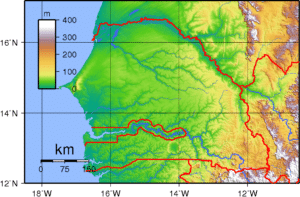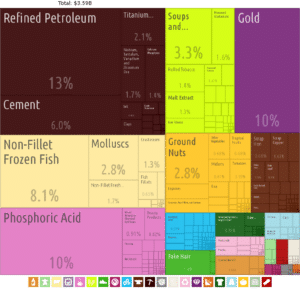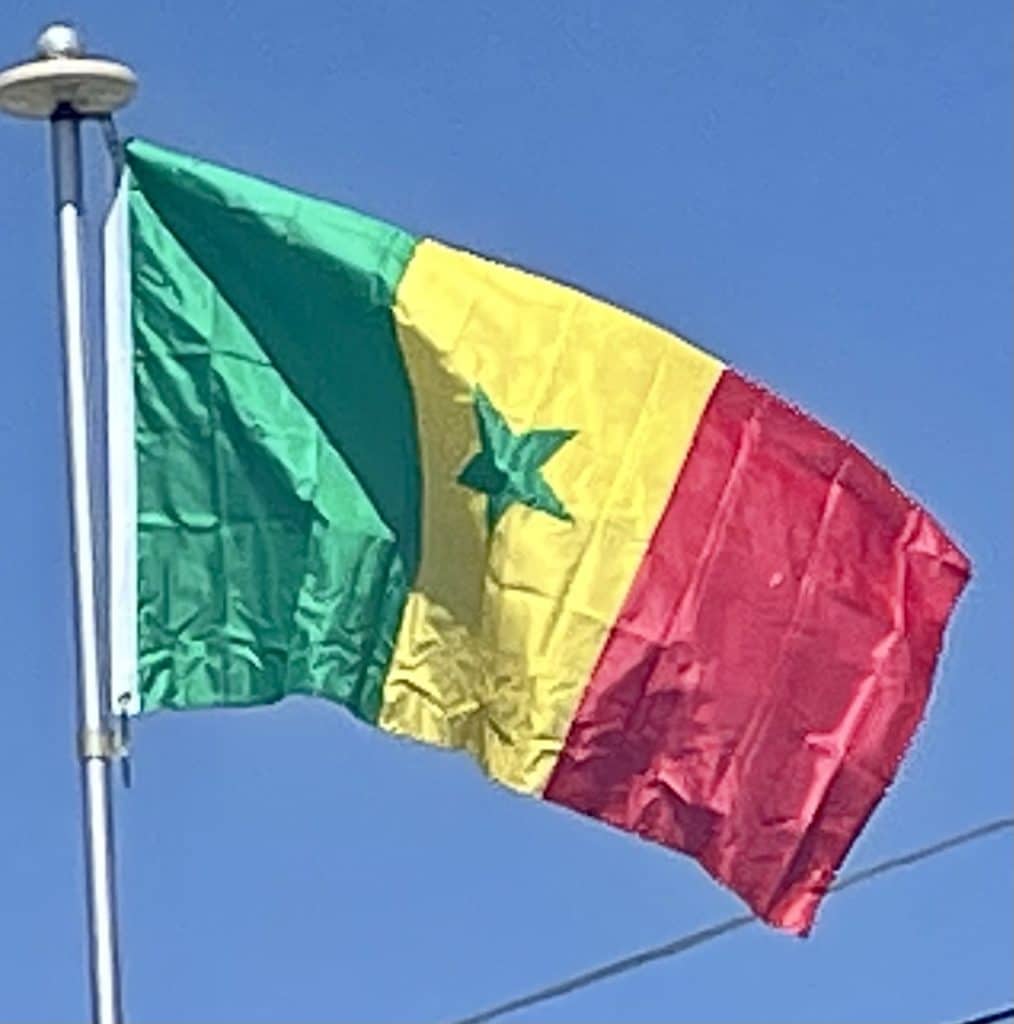Senegal is externally bounded by the Atlantic Ocean to the west, Mauritania to the north, Mali to the east, and Guinea and Guinea-Bissau to the south; internally it almost completely surrounds The Gambia, namely on the north, east and south, except for Gambia’s short Atlantic coastline.

The Senegalese landscape consists mainly of the rolling sandy plains of the western Sahel which rise to foothills in the southeast. Here is also found Senegal’s highest point, an otherwise unnamed feature 2.7 km southeast of Nepen Diakha at 648 m (2,126 ft). The northern border is formed by the Senegal River; other rivers include the Gambia and Casamance Rivers. The capital Dakar lies on the Cap-Vert peninsula, the westernmost point of continental Africa.
The Cape Verde islands lie some 560 kilometers (350 mi) off the Senegalese coast, but Cap-Vert (“Cape Green”) is a maritime placemark, set at the foot of “Les Mammelles”, a 105-metre (344 ft) cliff resting at one end of the Cap-Vert peninsula onto which is settled Senegal’s capital Dakar, and 1 kilometer (0.6 mi) south of the “Pointe des Almadies”, the westernmost point in Africa.
Economy:
The economy of Senegal is driven by mining, construction, tourism, fishing and agriculture, which are the main sources of employment in rural areas, despite abundant natural resources in iron, zircon, gas, gold, phosphates, and numerous oil discoveries recently. Senegal’s economy gains most of its foreign exchange from fish, phosphates, groundnuts, tourism, and services. As one of the dominant parts of the economy, the agricultural sector of Senegal is highly vulnerable to environmental conditions, such as variations in rainfall and climate change, and changes in world commodity prices.

The former capital of French West Africa, is also home to banks and other institutions which serve all of Francophone West Africa, and is a hub for shipping and transport in the region.
Senegal also has one of the best developed tourist industries in Africa. Senegal’s economy depends on foreign assistance. It is a member of the World Trade Organization.
The main obstacles to the economic development of the country are among others a great corruption with inefficient justice, very slow administrative formalities, a failing education sector.
The main industries include food processing, mining, cement, artificial fertilizer, chemicals, textiles, refining imported petroleum, and tourism. Exports include fish, chemicals, cotton, fabrics, groundnuts, and calcium phosphate. The principal foreign market is India with 26.7% of exports (as of 1998). Other foreign markets include the United States, Italy and the United Kingdom.
As a member of the West African Economic and Monetary Union (WAEMU), Senegal is working toward greater regional integration with a unified external tariff. Senegal is also a member of the Organization for the Harmonization of Business Law in Africa.
Senegal achieved full Internet connectivity in 1996, creating a mini-boom in information technology-based services. Private activity now accounts for 82 percent of its GDP. On the negative side, Senegal faces deep-seated urban problems of chronic high unemployment, socioeconomic disparity, juvenile delinquency, and drug addiction.
